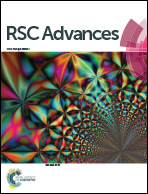Ultrafast broadband nonlinear optical properties and excited-state dynamics of two bis-chalcone derivatives
Abstract
The development of organic nonlinear optical (NLO) chromophores is vital for various fields such as two-photon biomedical imaging, optical limiting, etc. In this work, two bis-chalcone molecules 1,4-bis[3-(2,4-dimethoxyphenyl)-2-acryloyl]benzene (C1) and 4,4′-bis[3-(2,4-bimethoxy phenyl)-2-acryloyl]biphenyl (C2) were synthesized and characterized. The excited-state dynamics of these two chromophores were studied using femtosecond transient absorption (TA) measurements. And their broadband nonlinear absorption properties and optical limiting (OL) response were investigated by femtosecond open-aperture Z-scan and intensity-dependent transmittance measurements in the wavelength range from 515 nm to 800 nm, respectively. The TA results demonstrate that C2 has strong excited-state absorption behavior and longer lifetime. In addition, the nonlinear absorption response of C2 was found to be superior to that of C1 in the visible range after 500 nm, which is attributed to a two-photon-absorption induced excited-state absorption mechanism. These results indicate that the nonlinear optical response and excited-state dynamics in bis-chalcone compounds could be enhanced via intramolecular charge-transfer.



 Please wait while we load your content...
Please wait while we load your content...